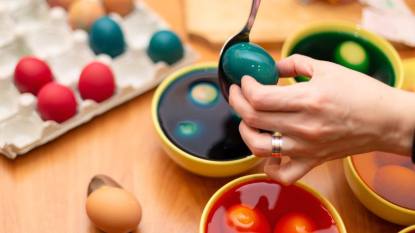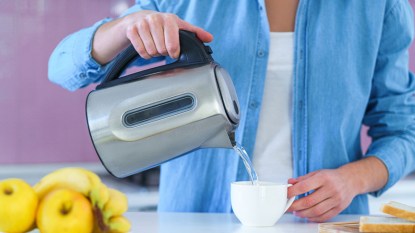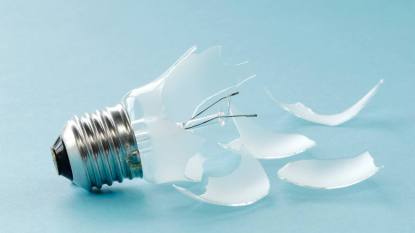Martha Stewart Cleans Dirty Flower Vases with Baking Soda — But Does It Work?
A dirty flower vase causes fresh blossoms to wilt and die fast.

Is there a more beautiful sight than fresh flowers sitting in a vase? Whether you receive roses as a Mother’s Day gift or buy daisies to adorn your space, there’s no doubt flowers bring life to any room. For this reason, they deserve to sit in a spotlessly clean vase. But while vases are often washed with warm soapy water to sanitize the surface, that may not lift stubborn dirt or residue. Instead of searching for a chemical-filled cleaner, take a page out of Martha Stewart’s book and simply use baking soda. This household staple cleans any surface — from bathroom tiles to stovetops — in minutes. Plus, it’s gentle on the vase’s surface so it won’t scratch the material. Keep reading to learn about the dangers of putting flowers in dirty flower vases and how to effectively clean them with baking soda.
Why You Should Clean Your Flower Vases
The first step in taking care of flowers is cleaning the vase. A dirty flower vase harbors bacteria, which clings onto the stems and acts as a barrier against water flow. This ultimately causes your beautiful blossoms to wilt and die too quickly. “Everything you do to extend the life of your blooms is to avoid bacteria growth,” Rachel Bridgwood, co-owner of Sweet Root Village, tells MarthaStewart.com. “Starting with a dirty vessel would immediately set you back, so working with a clean vase will be the best way to start.” The good news is, keeping your flower vases clean is easy and takes less than five minutes to do.
How To Clean Dirty Flower Vases Using Baking Soda
Stuck-on dirt and grime doesn’t stand a chance against baking soda. Why? Because this cleaning agent is an alkaline substance that gets rid of dirt with ease. When it’s not dissolved, baking soda works as a mild abrasive. This makes gently scrubbing glass, ceramic, or metal vases hassle-free.
Although baking soda is truly a miracle ingredient, it can’t clean flower vases on its own. You’ll also need a clean kitchen sponge (Buy from Walmart, $4.98) for a wide vase, or a vase cleaning brush (Buy from Amazon, $9.99) for a narrow one. These tools are key for wicking away dirt and residue trapped inside of the vase, and will result in crystal clear vases that make your bouquets shine. For best results and to avoid scratches, follow Stewart’s steps and video below.
Tools:
- Sponge or vase cleaning brush
- A box of baking soda
- Dirty vase
- A clean dish towel (optional)
- Mild dish soap (optional)
Directions:
- For a wide vase: Run the sponge under warm water then wring it out so it’s slightly damp. Grab the box of baking soda and add 2 to 3 shakes of it onto the sponge’s softer side, if there’s a coarser side for hard scrubbing.
- For narrow vase: Wet the cleaning brush with warm water. Place 2 to 3 spoonfuls of baking soda inside the vase.
- Scrub the baking soda around the interior of the vase, lifting any dirt and residue in the process. This should take less than one minute. If the baking soda begins clumping too much, pour in a little bit of water to dissolve it.
- Once the inside of the vase is clean, rinse it with water until the baking soda mixture is entirely gone.
- Optional step for a more thorough clean: Drizzle dish soap on the inside and outside of the vase. Wash the vase with the sponge or brush under warm water, stopping when all of the soap suds disappear.
- Dry the vase by hand using a dish towel, or allow it to air-dry before placing your cut flowers and water in the base.
Floral Fun
With the help of baking soda, flower vases go from dirty to sparkling clean in minutes. This comes in handy when you’re gifted flowers for special occasions like Mother’s Day, or when you simply treat yourself to a fresh spring bouquet. For more tips on how to make flowers last longer, check out our stories on using vodka to prevent bacteria growth and hot water to perk up droopy hydrangeas!













